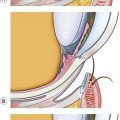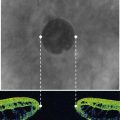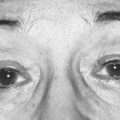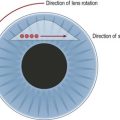CHAPTER 8 Fundamental principles, goals of and indications for surgery
Development of modern phacoemulsification
Duke-Elder1 credits Daviel (1753) with the earliest description of cataract surgery as we understand it today. Prior to this, treatment of cataract had relied on dislocation of the opaque human lens into the vitreous cavity (the technique of couching). During the 20th century advances in instrument manufacture, development of sutures, and the introduction of the operating microscope came together to produce successive decades of rapid development in cataract surgery. The use by Ridley of extracapsular cataract surgery combined with the first intraocular lens in London in the late 1940s set the trend. Whilst lens implants did not gain wide acceptance for many years, by the mid-1970s extracapsular cataract surgery combined with posterior chamber lens implantation presented a reliable and safe way of restoring vision in patients with cataract. It proved much more acceptable to patients than the alternative of aphakic spectacles worn after intracapsular cataract surgery. Anterior chamber supported lens implants lost popularity during this period and are now used only where capsular support for a posterior chamber lens has been lost.
During the period 1973–9 Kelman was working on ultrasonic fragmentation of the human lens using 3 mm corneoscleral incisions. In the early days of the technique2, there were concerns about corneal endothelial cell damage caused by phacoemulsification. Later refinements including phacoemulsification within the capsular bag and use of viscoelastics combined with improving technology have significantly reduced this concern. Early phacosurgeons also experienced problems with dense brunescent cataracts which were resistant to fragmentation with the early generation of ultrasonic handpieces.
The move towards acceptance of phacoemulsification as the preferred method of cataract surgery in the western world followed the description of the opening of the anterior lens capsule using a continuous circular tear (continuous curvilinear capsulorhexis or CCC) by Gimbel and Neuhann in 19903. This opened the path to phacoemulsification within the capsular bag (as opposed to the anterior chamber) initially using a group of strategies for removing the lens nucleus known as divide and conquer2 and later phaco chopping techniques (Nagahara’s horizontal chop, Dillman’s vertical or ‘quick’ chop, and Koch’s stop and chop). Some aspects of the extracapsular operation, such as hydrodissection of the nucleus and simultaneous irrigation and aspiration to remove lens cortex, were carried forward and updated to complete the operation.
Goals of surgery
The primary goal of surgery is to remove the opaque human lens and, in almost all situations, replace the lost optical power with a lens implant. This should result in improved visual function for the patient. Box 8.1 lists what can be considered additional goals in cataract surgery.
Indications for surgery
Other ophthalmic conditions
Removal of the human lens may be therapeutic in other conditions including phacomorphic and phacolytic glaucoma and situations where the subluxated human lens causes pupil block glaucoma. Interest has recently been focused on intraocular pressure reduction in glaucoma and ocular hypertensive patients after cataract surgery5–7. This may prove a growing indication for early cataract surgery in coming years. Cataract surgery may be desirable to improve the fundus view in treatment of retinal disease, especially diabetic retinopathy and retinal detachment.
1 Duke-Elder S. Diseases of the lens and vitreous: glaucoma and hypotony. In: Duke-Elder S, editor. System of Ophthalmology, vol. XI. London: Kimpton; 1969:253-257.
2 Gimbel HV. Principles of nuclear phacoemulsification. In: Steinert RF, editor. Cataract Surgery: Techniques, Complications and Management. New York: Saunders, 1995.
3 Gimbel HV, Neuhann T. Development, advantages, and method of the continuous circular capsulorhexis technique. J Cataract Refract Surg. 1990;16(1):31-37.
4 Endophthalmitis Study Group, European Society of Cataract and Refractive Surgeons. Prophylaxis of postoperative endophthalmitis following cataract surgery: results of the ESCRS multicenter study and identification of risk factors. J Cataract Refract Surg. 2007;33(6):978-988.
5 Shingleton BJ, Laul A, Nagao K, et al. Effect of phacoemulsifiation on intraocular pressure in eyes with pseudexfoliation. J Cataract Refract Surg. 2008;34(11):1834-1841.
6 Issa SA, Pacheco J, Mahmood U, et al. A novel index for predicting intraocular pressure reduction following cataract surgery. Br J Ophthalmol. 2005;89:543-546.
7 Poley BJ, Lindstrom RL, Samuelson TW. Long-term effects of phacoemulsification with intraocular lens implantation in normotensive and ocular hypertensive eyes. J Cataract Refract Surg. 2008;34(5):735-742.







